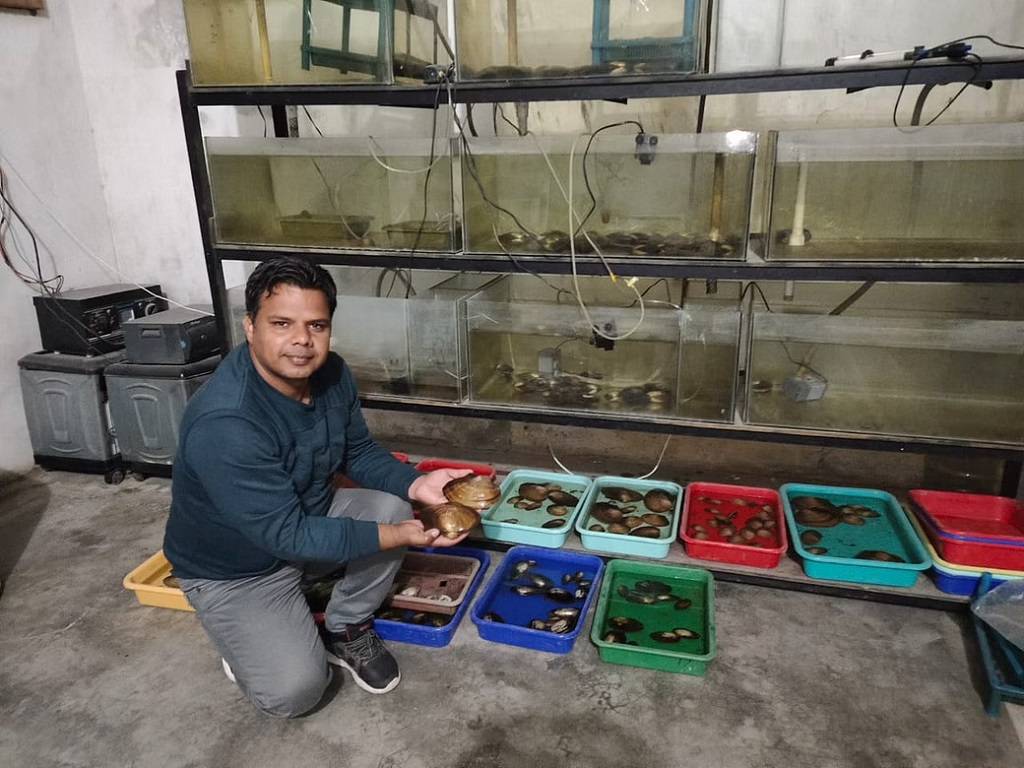
Jitender is a postgraduate in Computer Application who comes from an agricultural background and claims that his desire to try something new led him to pearl farming. Jitender started with a Rs 20,000 initial investment in 2009, but now that pearl cultivation has advanced, he thinks that an initial investment of Rs 5,000 to Rs 10,000 is sufficient.
There are a variety of ways for producing pearls, from ponds to cement tubs or even a fish tank. Jitender's pearl cultivation method is referred to as Recirculating Aquaculture System (RAS).
How RAS Method Works?
Recirculating aquaculture systems (RAS) filter the water from the fish tanks and reuse it within the tank. This drastically decreases the quantity of water and area needed to grow various sea foods intensely. "Waste management and ammonia toxicity are two of the major concerns we experience during pearl farming, and both of these issues are handled when the RAS technique is used," Jitender explains. This is a method that is used all across the world and is far superior to ponds and other tanks.
"There are many aspects that need to be addressed when pearl culture is done in a pond," Jintender explains. "It has to be of a minimum size, managing the temperature is not possible, and the pond where pearl is cultivated must be at least six months old, if not more." Because the environment in a fish tank can be regulated, it is possible to feed the correct quantity of algae, monitor growth, and other aspects.
The Amount of Pearls
If a mussel is tiny, it may retain between 2 and 8 pearls, according to Jitender. If the mussel is bigger, you can get up to 28 pearls, 14 on each side. Jitender also adds that mussels must be treated with care: "Always obtain your mussels from a good known source, and when you have them for around six days, they are stored in a set-up referred to as a critical care unit." The mussels are moved to the fish tank once their health has been determined.
When the mussel quality is determined, a unique feeding chart is created based on the quality. "Special food and minerals are supplied for low-quality mussels for 65 days, followed by the pearl extraction technique." If the mussels are of excellent quality, the extraction technique may be completed in 20 days," he explains.
How can you grow pearls at home?
-
The first step is to get the water analyzed to see whether it is suitable for aquaculture, which may be done in a government laboratory. Jitender also mentions that getting the test done at a private laboratory is an option, although the cost may be higher.
-
After that, Jitender suggests getting official training at one of the institutes that provide the course. This will help you learn the many varieties of pearls and how to harvest them properly.
-
If you want to start with a modest home setup, you'll need a minimum of two fish tanks. The fish tanks must be stacked on top of one another so that water from the upper tank flows into the lower tank. This will necessitate drilling a hole in the tank that will be placed on top.
-
An air pump, one venturi pump to control water flow, and one water pump to control water temperature will be installed in the tanks.
-
After all of these components have been fixed, the system should be run for seven days, a few hours each morning and evening.
-
3 feet in length, 2.5 feet in breadth, and 1.5 feet in depth are possible tank measurements. Jitender claims that about 50 mussels can be kept in a tank of this size.
-
In terms of time investment, you'll need to set up around 2.5 hours every day to maintain track of this setup.
-
Make sure the algae fed to the mussels is of good quality, since this will affect the quality of the pearl they generate. The mussels are also provided vitamins and minerals.
-
If you plan to produce pearls for commercial purposes, be sure you meet all licence requirements.
















